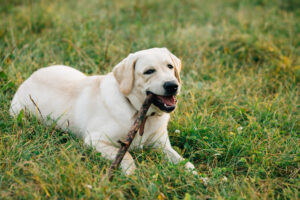
Training AKC Labrador Retriever Puppies can be a rewarding experience for new pet owners, as these dogs are known for their intelligence, friendly nature, and eagerness to please. Labrador Retrievers, often raised by breeders like the reputable Santa Rosa Labrador Breeder, have been a top choice for families and service roles for years. However, even with their natural abilities, early and effective training is essential to shape your puppy into a well-behaved and loving companion. This guide outlines five essential steps to help you train your Labrador puppy confidently and successfully.
1. Establish a Routine with Consistent Commands
Consistency is the cornerstone of training any dog, especially puppies. Start by setting a clear schedule for feeding, potty breaks, and playtime. Labrador puppies thrive in structured environments where they can predict routines. It’s important to assign a specific word or phrase to each command. Whether it’s “sit,” “stay,” or “come,” use the same words every time to avoid confusing your puppy.
During this initial phase, you should also introduce crate training. Labradors can experience separation anxiety, so a crate helps create a safe space where they can relax when you’re not around. Use positive reinforcement by giving treats or toys every time your puppy enters the crate willingly. Over time, your Labrador will associate the crate with comfort, making it easier for them to adapt to being left alone.
2. Socialize Early with People and Other Pets
Labradors are social animals, but early socialization is essential to ensure they grow into confident adults. From a young age, expose your puppy to different environments, sounds, and friendly animals. This will help them learn how to behave appropriately in various situations. Socialization also reduces the chances of developing fear or aggressive behavior later on.
Organize supervised playdates with other puppies or well-behaved dogs. If you’re in the Santa Rosa area, check out local parks or community events where dogs are welcome. It’s a great way to introduce your puppy to new experiences and prevent them from becoming overly anxious in unfamiliar settings.
3. Use Positive Reinforcement Techniques
Labrador Retrievers respond best to positive reinforcement techniques. Instead of punishing bad behavior, reward your puppy for doing the right thing. Each time they successfully follow a command, offer a small treat, praise, or a favorite toy. Labradors are highly food-motivated, which makes treats an effective tool during training.
Avoid long training sessions that might overwhelm your puppy. Stick to short, focused sessions lasting 10 to 15 minutes each, as young puppies have limited attention spans. Keep your energy positive and encouraging. When your Labrador feels rewarded for good behavior, they are more likely to repeat it, building a foundation of trust between you and your pet.
4. Focus on Leash Training and Recall Commands
Leash training is a vital skill for Labrador puppies, as these dogs have a lot of energy and enjoy exploring. Start leash training indoors before moving to outdoor environments with more distractions. Encourage your puppy to walk calmly by your side, rewarding them when they stay on track. If they pull on the leash, stop walking immediately until they return to your side. This teaches them that pulling will not get them where they want to go.
Equally important is teaching the “recall” command. Labradors have strong instincts to run and play, so it’s essential they return to you when called. Start practicing recall indoors with minimal distractions. Use a cheerful voice and give treats when they come to you. Once your puppy masters indoor recall, gradually introduce outdoor training in a safe, fenced area.
5. Address Behavioral Issues Early
Labradors are known for their playful nature, which can sometimes lead to unwanted behaviors like excessive biting or jumping. Address these behaviors early to prevent them from becoming problematic as your puppy grows. For example, if your puppy bites during play, stop the activity and redirect their attention to a chew toy. This teaches them that biting is unacceptable, but toys are appropriate for chewing.
Jumping on people is another behavior to curb early. When your puppy jumps, ignore them until all four paws are on the ground. Then, reward them with attention and treats. Labradors love interacting with people, so they will quickly learn that staying calm gets them the attention they crave.
Training AKC Labrador Retriever Puppies requires patience, consistency, and a lot of positive reinforcement. By following these five essential steps—establishing a routine, socializing early, using positive reinforcement, focusing on leash and recall training, and addressing behavioral issues—you can guide your Labrador puppy into becoming a well-behaved and loving companion. With guidance from reputable breeders like Santa Rosa Labrador Breeder, you’ll have all the support you need to raise a happy and well-trained dog. Start early, be patient, and enjoy the rewarding journey of training your Labrador Retriever!




